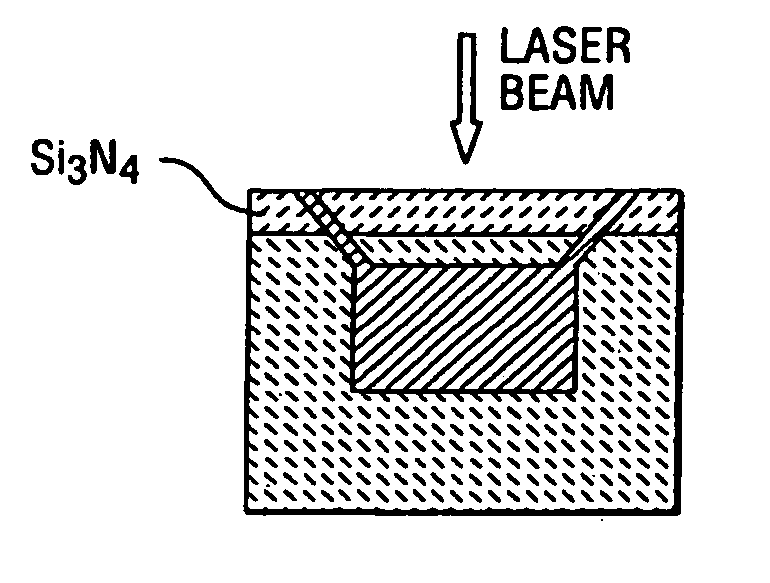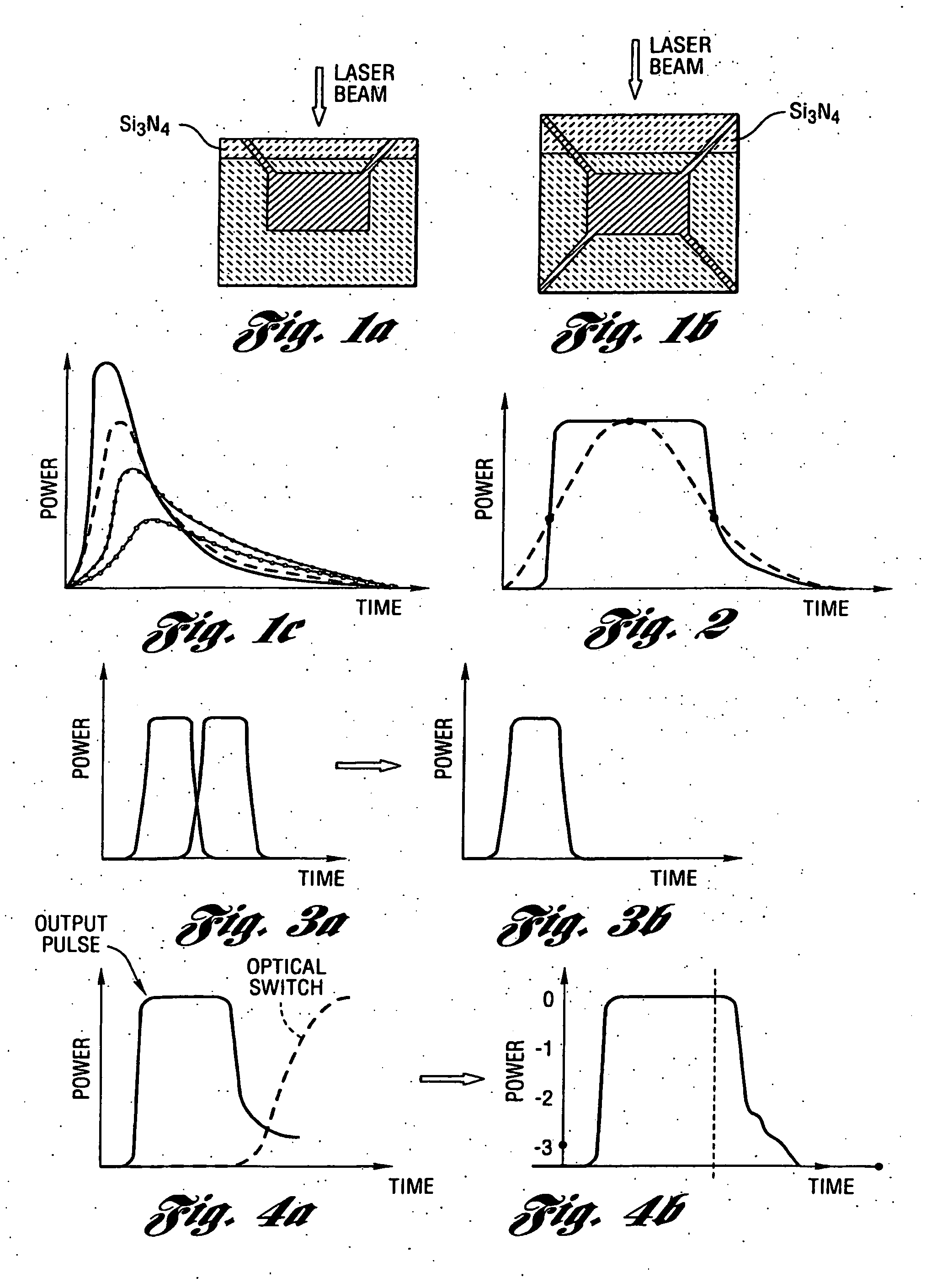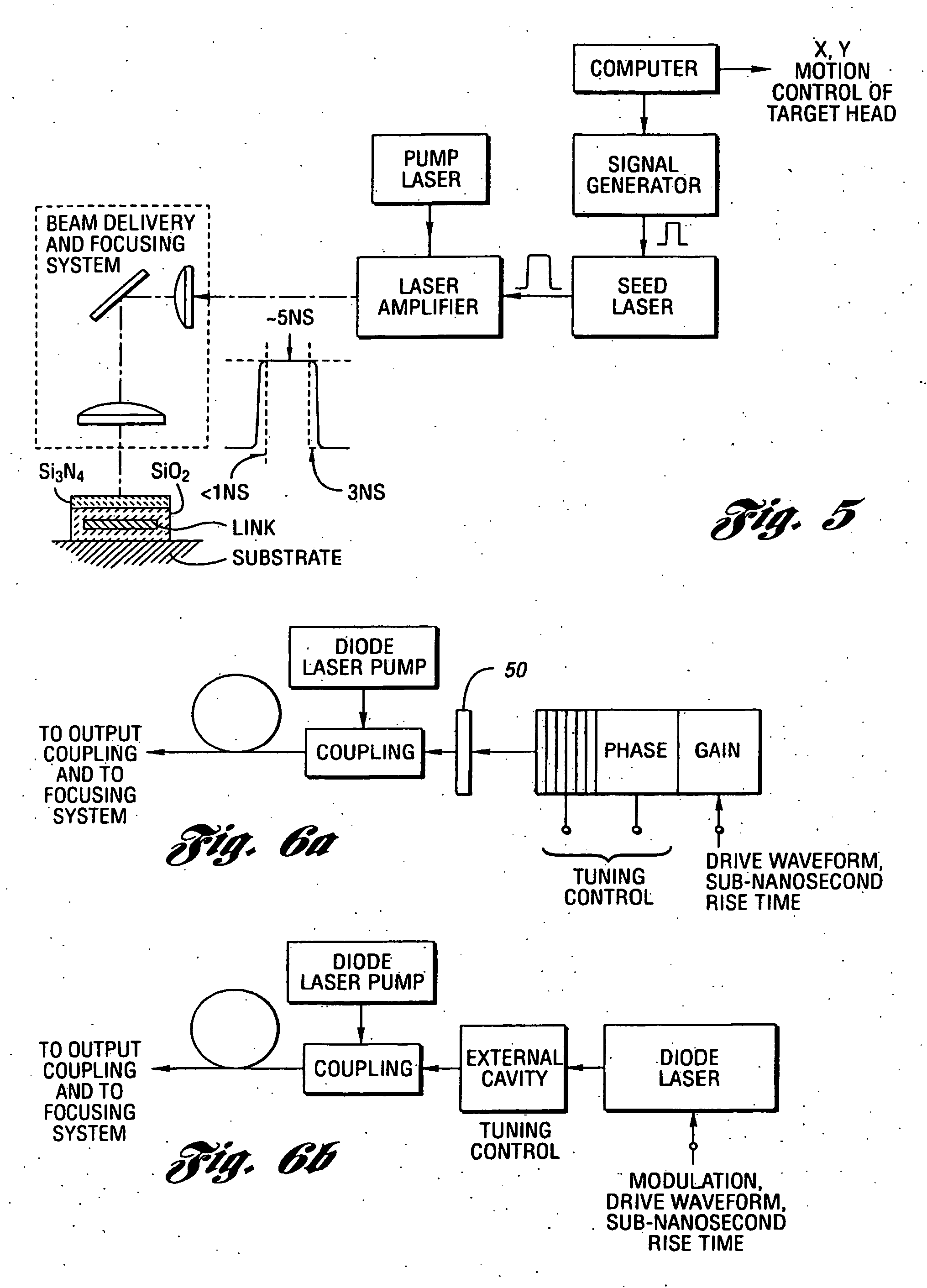Energy-efficient, laser-based method and system for processing target material
a laser-based method and target material technology, applied in the direction of manufacturing tools, semiconductor/solid-state device details, welding/soldering/cutting articles, etc., can solve the problems of liquid crystal repair, thermal runaway conditions and catastrophic damage, and the substrate and/or adjacent can be overheated and damaged
- Summary
- Abstract
- Description
- Claims
- Application Information
AI Technical Summary
Benefits of technology
Problems solved by technology
Method used
Image
Examples
Embodiment Construction
Laser Processing System Architecture
[0102] Those skilled in the art can appreciate that the following embodiment can be applied to several applications in micromachining and laser processing with appropriate adjustments to parameters like laser power, energy density, spot size, wavelength, pulse width, polarization and repetition rate. The specific application to metal link blowing is described for illustrative purposes.
[0103] In a preferred embodiment of FIG. 7, a seed laser 10 and a fiber amplifier are mounted on a stable platform attached to the motion system 20 and the workpiece. It is very important in removing links that the beam be positioned with accuracy of less than 3 / 10 of a micron. The timing of the laser pulse to correlate with the relative positions of the target and optical system is important because of the continuous motion required in order to obtain high processing speeds.
[0104] The laser 10 is externally controlled by the computer 33 and a signal generator 11...
PUM
| Property | Measurement | Unit |
|---|---|---|
| Length | aaaaa | aaaaa |
| Fraction | aaaaa | aaaaa |
| Time | aaaaa | aaaaa |
Abstract
Description
Claims
Application Information
 Login to View More
Login to View More - R&D
- Intellectual Property
- Life Sciences
- Materials
- Tech Scout
- Unparalleled Data Quality
- Higher Quality Content
- 60% Fewer Hallucinations
Browse by: Latest US Patents, China's latest patents, Technical Efficacy Thesaurus, Application Domain, Technology Topic, Popular Technical Reports.
© 2025 PatSnap. All rights reserved.Legal|Privacy policy|Modern Slavery Act Transparency Statement|Sitemap|About US| Contact US: help@patsnap.com



